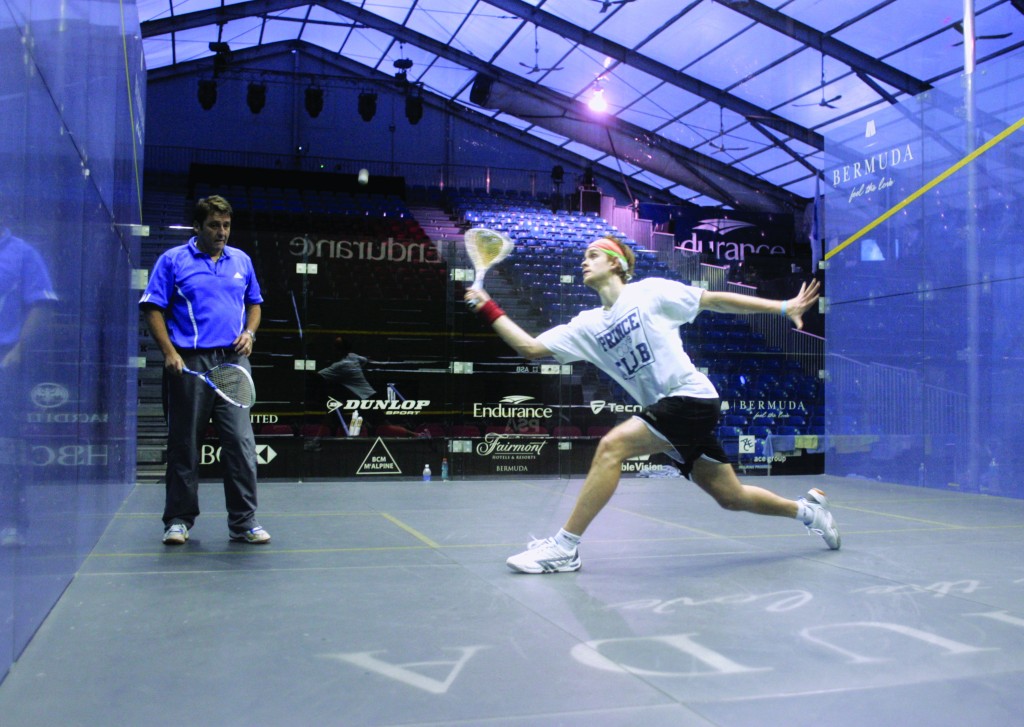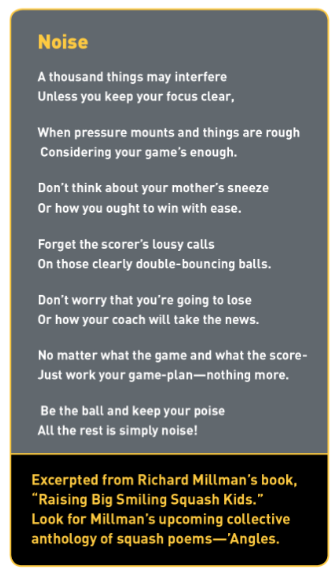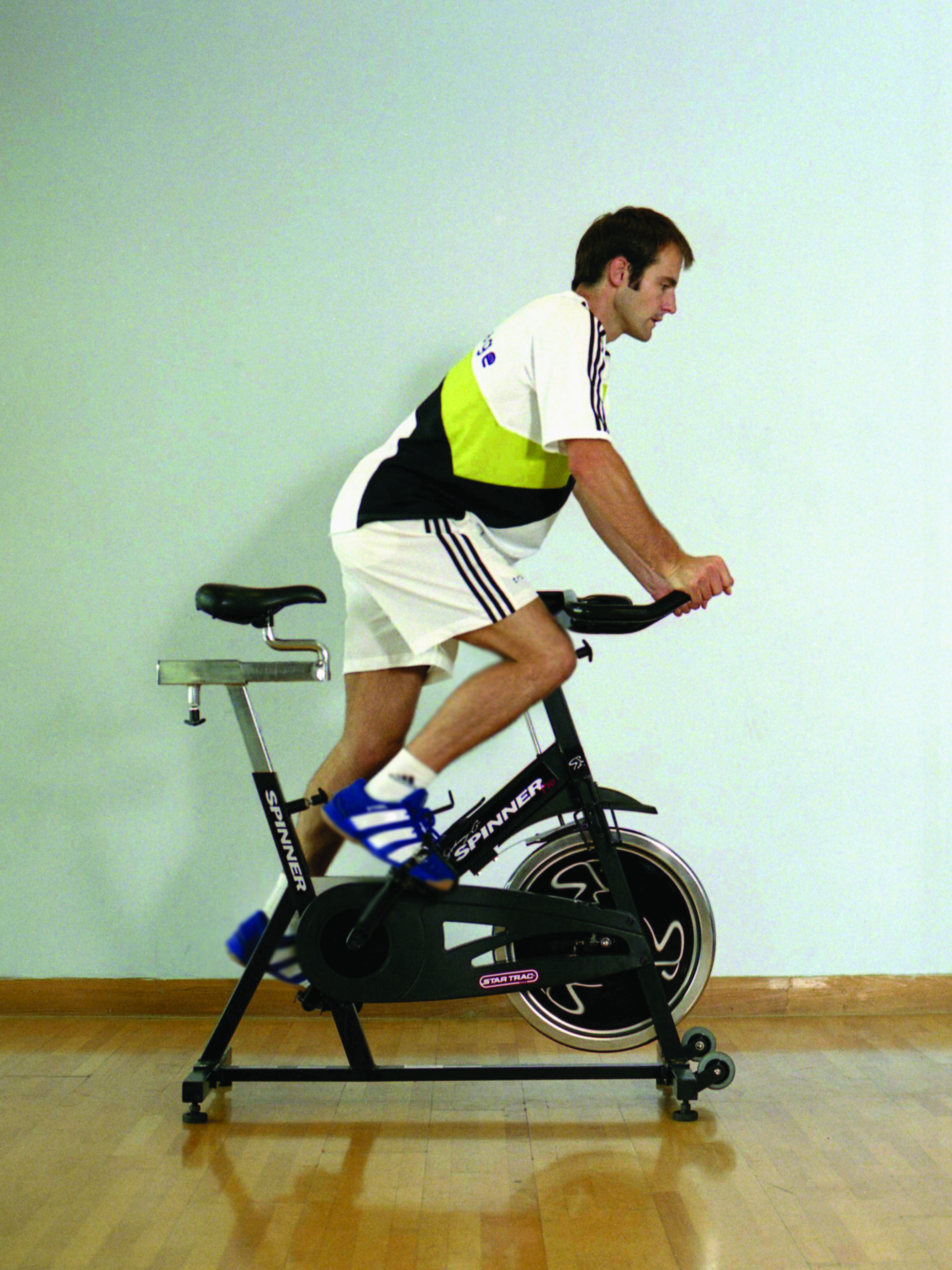
By Richard Millman, Director of Squash, Kiawah Island Club
Technical
If you need to make technical changes you need several things on your side: Commitment, expert professional help, and at least ten to twelve weeks of time where you are prepared to work religiously on the technical change until it becomes automated. Without technical excellence you can’t reach your peak performance. But unless you have at least those 10-12 weeks to work on a technical change—forget it! It will just screw you up. And by the way—while you are working on the change over those ten to twelve weeks—don’t try and force it while playing competitively—that will also screw you up.
Technical changes take time—and the whole point of competition is to deny the opponent time—so only practice technical changes where you have plenty of time.
As you get better you can increase the pressure (i.e., decrease the available time) proportionally to your rate of improvement.
So what about technical Peaking for Performance? Choose the areas that you want to polish. Design a drill that focuses you on the particular area(s). Plan a schedule.
For example: It’s twelve weeks until your targeted competition. And you are particularly interested in improving your serve. How many stock serves do you have? Most people have between two and five stock serves. They should all be practiced in proportion to the frequency with which you use them. With me—it’s my lob serve that get’s the most use. So with twelve weeks to go, I would schedule at least twice a week a twenty minute session to polish my lob serve. My drill would be—starting in the service box, rehearse my personal service ritual mentally—and then do 50 repetitions of the serve, moving through the center of the court in rhythm with the ball before retrieving it and jogging back to the service box to repeat.
On days of competition, I would do this drill before I played each day and if the competition is not at my usual club/court, I would try and get to the court either the day or the morning before my game. Many courts bounce differently and the serving drill will teach you a lot about the different ‘feel’ of the court.
This same sequence and principle should be applied to any area of technical improvement—return of serve, lobs, drops, angles, volleys, back corners, movement etc. Design your drill to bring out the technical area you want to improve. Schedule at least two peaking sessions a week and then do additional ones the day before or the morning before the game.
There are many good technical drills to use for Peaking. Some of the best polishing drills are as follows:
 Drop volleys: Standing in front of you, the coach or practice partner feeds you fifty straight drop volleys, fifty cross-court drop volleys and fifty mixed between the two. Then you repeat the practice on the opposite side.
Drop volleys: Standing in front of you, the coach or practice partner feeds you fifty straight drop volleys, fifty cross-court drop volleys and fifty mixed between the two. Then you repeat the practice on the opposite side.
Cooperative volley practice: You and your partner stand parallel —one on the forehand and one on the backhand. You volley slowly back and forward, recovering with your shot to the center in rhythm with the ball. As your confidence increases, speed up the rate. If you are going too fast, slow down until your confidence builds again.
Cooperative volley/kill practice: Same as the previous one, except you kill your partner’s feed into the straight nick, then re-feed to yourself, before feeding back cross-court for your partner to volley into the straight nick. Build cooperatively - never going faster than you can both maintain a rhythm for.
Physical.
Physical preparation is a highly studied and these days advanced field. There are several world wide experts on Sports Specific training that I personally am aware of. I am particularly a fan of the Canadian Guru Tudor Bompa (tudorbompa.com) and some of you may be aware of the work of Dr Carlos Santana ( not the musician). In our own field of squash we are particularly lucky to have Damon Browne working here in the USA. If you can access any of these people for your physical training plan, I recommend you do.
If not here are some general thoughts on physical Peaking for Performance:
First of all—no matter how fit you feel, if you are going to engage in a new and different physical regime—get yourself checked out by the Doc’—better safe than sorry right?
Second, don’t just plan for a few weeks or months. Get a plan for at least two years. You’re kidding yourself if you think you can get fit in a month or two months. And frankly if you do a couple of months and then quit because the tournament is over—you’ve wasted a terrific opportunity.
Third—don’t do someone else’s plan—you are an unique individual with unique strengths and weaknesses—see a strength and conditioning coach for at least a couple of long sessions—two hours—and talk with the coach about what you are trying to achieve. If you are an experienced trainer—I still recommend at least one meeting—what you have been doing may have drifted away from what you now need. It’s no good doing the five mile run four days a week if you can turn to cut off a volley quickly enough—sports specific—means movements that relate specifically to your on-court behavior.
Fourth—keep an accurate calendar. Never train during the 48 hours prior to a competitive match—maybe even 72 hours for heavy weight training—unless you are more focused on the training that the match.
Fifth—Use tournaments as part of your physical training regime. Don’t think of all tournaments purely as competitive, use them to train—there is no substitute for match play when peaking. Be clear in your mind what the difference between a training tournament and a target tournament is. And by the way—if you don’t do enough training tournaments, you’ll never peak for your target tournament.
Sixth and last: Determine how much time you have before your targeted event and tailor your plan accordingly. Get professional advice as to how much and what kind of work to do in your allotted time.
As a general guide (always refer to trained sports specific strength and conditioning coach)
these are the stages that you should be going through:

Strength related training
Anatomical Adaptation—light strength training to prepare your body for working with weights.
Maximum Strength—Increasing your personal maximum strength for specific physical performance.
Conversion to Power—Combining your newly developed power with speed to produce the explosive power needed on a squash court
Power Endurance—Developing the ability to make explosive movements many times consecutively over the course of the match.
Cardio-Vascular related training
Stamina—endurance work of more than twenty minutes bringing the heart rate over a rate recommended by your strength and conditioning coach and your medical advisor—specific to you. (120 beats per minute sometimes is used for an average person of medium age and good physical condition—but get your own specific number!)
VO2 Max—high intensity repetitive work of between 90 and 120 seconds —designed to improve your ability to take oxygen on board and get it into your blood stream. 600 meter sprints might be a good example—or something with less physical impact.
Anaerobic work—Again high speed work, but this time with minimal rest. 45 -75 seconds work period with a similar or even less rest. Designed to help improve your recovery time and your body’s ability to deal with toxins like lactic acid and Carbon Dioxide. Court sprints are the classic squash players anaerobic exercise, although the high impact might not be good on your joints. Ghosting and Bike sprints also work well. As a rule of thumb always stop when you think you could do just one more set. That way you won’t fear the next session and you will build the work load at a rate you can manage.
Speed work—Short bursts as fast as you can manage, but this time with full recovery. Players often make the mistake of turning a speed session into an Anaerobic session because they don’t take enough rest. You need full recovery so that you can work on speed. And only do as many reps as you can maintain without any fatigue. Once you start feeling fatigued, you won’t be helping your speed. Again beware of high impact issues. The bike might be another option.
As you get older less becomes more. There is plenty of research out there that shows that as you get past the age of 35 or 40, training the same amount as a 25 or 30 year old will actually worsen your performance. Again—get advice from a trained Sports specific strength and conditioning coach and get a schedule which is specific to you and your situation.
Mental Training
Once again, as with Physical strength and conditioning, I recommend that you research and work with a trained Mental coach. You might say, ‘ hey! isn’t that going a bit over the top? I’m just playing for fun after all.’ OK. But how much fun are you having tinning the ball too early in the rally, time after time. Or are you really having a blast getting so nervous that you can hardly play the first game. There are some great Mental coaches out there and a huge amount of reading material. Books like: Tim Galway’s ‘ The Inner Game of Tennis’ and as I mentioned ealier, Dan Millman’s ‘ The Way of the Peaceful Warrior’ are incredibly relevant to our game. Try and get a copy of the movie version of ‘The Peaceful Warrior’ starring Nick Nolte—it’s a great little movie.
We have some great mental training guys in our sport—Tim Bacon at Smith College springs to mind—and he makes mental training fun.
In the meantime, here’s some simple stuff that works:
Develop a ‘ performance’ mentality, not an ‘ outcome’ mentality. In other words keep your mind always on what you are trying to do—not on worrying about success or failure.
Develop some personal rituals that allow you to clear your mind and refocus on ‘performance.’ These include but are not limited to—A service ritual: a series of idiosyncratic behaviors that you use repetitively for serving to build you to a point where you are 100% committed to the moment of performance you are about to engage in ( I personally bounce the ball four or five times, set up, focus on a mark that I find on the wall and then wait til I ‘feel’ the moment of absolute readiness. Of course I have a change up ritual as well—we don’t want the opponent to get too comfortable with the ritual I use). Similarly a ritual behavior pattern ( such as turning away from the opponent, straightening your racket strings and waiting until the ‘moment’ of readiness transpires) should be adopted after losing a rally, to bring you back to the ‘performance’ mentality.
Accept that you won’t always win. This doesn’t mean that you’re prepared to let the game go. What it means is that you are prepared to focus on your game plan for the entire game—even when you are game or match ball down. The game plan is always the game plan—even in moments of extreme danger. If you maintained your ‘performance’ mentality right through the last rally, you did everything you could. Now make some notes about what you need to improve and go home and work on those points.
A word about being 7 or 8-0 up. A lot of people choke at this point and there seems to be general confusion about what to do. Well the ‘performance’ mentality particularly applies. And within the context of focussing on your performance, here is some content:
Whatever your gameplan was to get to 7 or 8 was obviously working. So don’t change it. However, your opponent doesn’t want to lose and is probably going to fight and play better than at any time in the match so far. So work your game plan—the same one—only tell yourself that you are going to concentrate on it and play it better than you have at any point ‘til now. Do it the most you have done it in the match. That way any attempted comeback will meet even stronger strategic, technical, physical and mental opposition than has been experienced to that point. And that—is soul destroying.
There are many other important Mental training drills and I recommend you do the research to find a way of getting ‘into the zone’ that works for you.
In the meantime, I hope you enjoyed this article about ‘Peaking for Perormance’ and that it gives you some benefit





